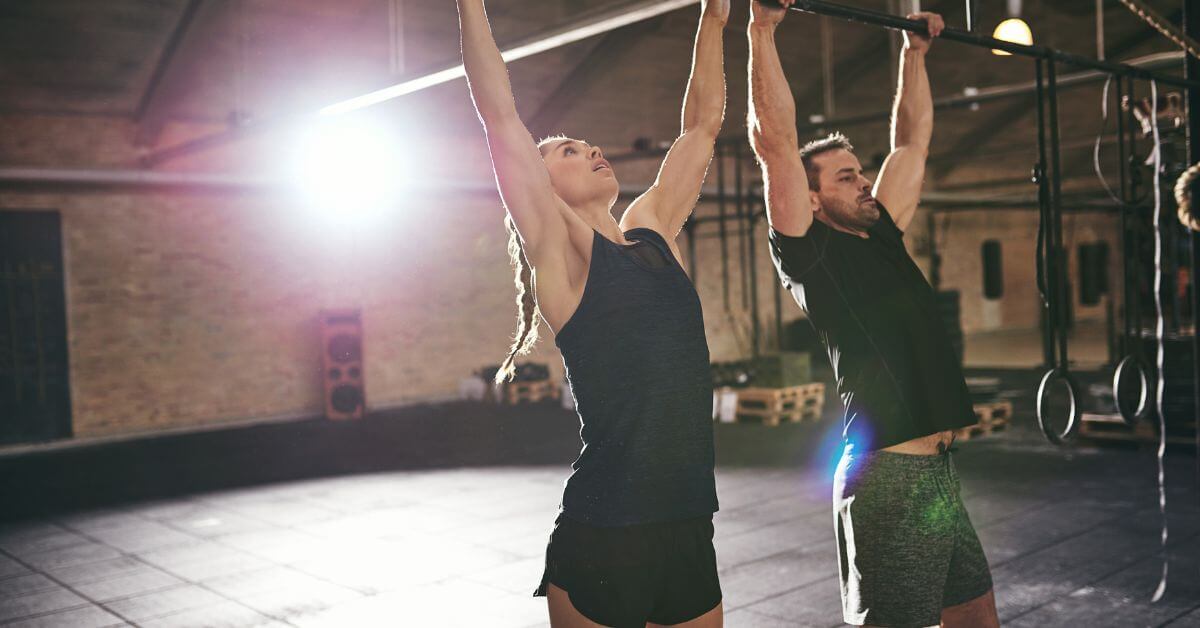Pull-ups are essential upper body exercises that aim to develop strength in your lats, traps, and some additional muscles. However, you may have specific questions surrounding pull-ups, one of which may be the following. Are pull ups a compound exercise?
Table of Contents
ToggleYes, pull ups are a compound exercise. Pull ups are compound upper body exercises that follow a vertical pull movement pattern and are considered one of the most functional multi-joint exercises. Pull-ups are excellent for building your lats, traps, and biceps.
You may have specific questions regarding the pull-up technique, its benefits, and how to program them into your regular workouts. Keep reading below to learn all these things, plus a guide on the best pull-up grips to elevate your workout sessions.
Start Building Your Dream Body Today
Ready to elevate your fitness game without falling into the trap of dull, repetitive routines that just don’t deliver? Imagine sculpting your ideal physique and boosting your health, all while still enjoying life’s pleasures, like those irresistible weekend getaways and your aunt’s legendary cheesecake. With our online fitness and nutrition coaching service, you don’t have to compromise. Dive into a personalized fitness journey that blends perfectly with your lifestyle, not against it. Book your completely free discovery consultation today, and take the first step towards a transformation that doesn’t require giving up the joys of life.

“I was skeptical about online fitness coaching, but Functional Body Savage completely changed my perspective. Vanja and Radomir’s personalized approach and attention to detail have helped me achieve goals I never thought possible. I’m stronger, more confident, and grateful for their guidance.”
Emily Thompson, San Francisco, CA
Learn More About Our Online Coaching ServiceQuick Summary
- Pull-ups are pretty difficult, but the rewards are well worth the effort, like many things.
- Natural grip pull-ups are the best type of pull-ups.
- The simplest pull-up is the chin-up.
- The hardest pull-up is one with an overhand grip.
What Are Pull-Ups?
Pull-ups are an upper-body exercise. It entails hanging from a pull-up bar by your hands with your palms facing outward and raising your complete body until your chest meets the bar using your arm and back muscles.
Pull-ups are one of the most effective and functional compound exercises for improving your upper-body pull strength, especially in the vertical movement pattern. Avoid shrugging your shoulders while doing the movement; concentrate on engaging your arms and shoulder muscles. Even though the exercise is easy, beginner strength training may have trouble learning it.
“The humble pull up may look pretty simple, but there’s much more to it than meets the eye. Far from being a poor-man’s lat pull down, the pull up is a highly compound movement that has real-world functional transfer. Pull ups make you better at climbing, throwing, and fighting.” – Adam Sinicki, AKA The Bioneer, author of the Functional Fitness and Beyond
What Muscles Do Pull Ups Work?
Pull-ups work lats and biceps and your deltoids, rhomboids, and core. It will be necessary for you to build up these muscles.
Pull-ups are a fundamental strength training activity that you can perform with nothing more than your body weight and a reliable bar to help you gain muscle. Although they require coordination, core stability, and upper body strength, even beginners can progress to performing full pull-ups.
How to Do Pull-Ups?
To do a pull-up, you have to lift your body upward from a dead hang position to bring your chin above the pull-up bar. Unlike chin-ups, which are performed with an underhand grasp, pull-ups are performed with an overhand grip.
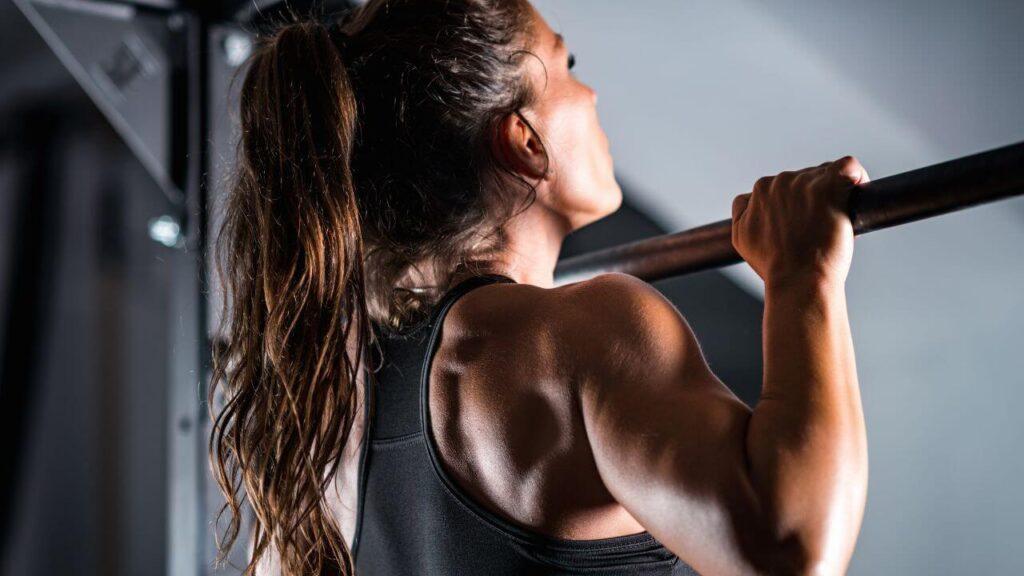
How to Perform a Pull-up
- Put your hands slightly wider than shoulder-width apart in an overhand grip, with your palms facing away from your body.
- Lift your feet off the ground to hang from the bar. Tighten your abs by bringing your core closer to your spine. Draw your shoulders down and back.
- Bend your elbows and raise your upper body toward the bar until your chin is over the bar by contracting the muscles in your back and arms. Try to avoid swinging your legs or raising your shoulders as you move. You want to ensure your shoulder blades are down and back throughout the workout.
- Inhale as you reach the peak of your movement. Then raise your body to the beginning position while extending your elbows.
4 Benefits of Pull-Ups
Pull-ups are extremely tough, but like many things in life, the benefits are well worth the effort, making them one of the best exercises you can perform to improve your fitness.
The following are the main advantages of pull-ups.
1. Functional Strength
Pull-ups are essential to functional training because they develop posterior strength. Aside from this, a few exercises allow you to work out this many muscles at once, significantly increasing the energy used by individuals who perform them.
Pull-ups work out your entire upper body. Compound exercises, like pull-ups, work out multiple muscle groups at once. When you perform pull-ups, your back, arms, and even abs, all get stronger. You lift yourself while stabilizing your body by using your abs [1].
2. Better Posture
We can tighten and strengthen your back muscles by improving your pull muscles.
Your shoulder blades will automatically be drawn back and down into the correct position, giving you a superior posture. Working the rear of the body is equally vital to maintain balance, preventing injuries, and enhancing total functional strength [2].
3. Reduced Back Pain
Pull-ups help to decompress the spine. You have the opportunity for the spine to experience decompression and distraction since you are hanging over the bar. The continual compression that most pressing exercises can cause on the spine is a welcome change [3].
4. Improved Physique
Pull-ups strengthen and shape your shoulders, forearms, and chest in addition to your back (pecs). They are excellent exercises for targeting many major muscles in the body because, when done correctly, they also engage your abs, especially your deep transverse abdominis. Regularly completing pull-ups can enhance muscle tone and definition [4].
Different Types of Pull-Ups
The chin-up and pull-up grip, also known as a pronated or supinated grip, are the two possibilities that come to mind when we think about pull-ups. However, various additional pull-up grips can all be beneficial depending on the individual’s intents, strengths and weaknesses, and goals.
Let’s look at eight of them.
Neutral Grip Pull-up
Many people believe that performing a pull-up with a neutral grip, palms facing each other on two parallel pull-up handles, is the easiest because it essentially allows you to use all of the upper body muscles needed to perform a pull-up, including your lats, biceps, deltoids, pecs, and shoulders. Additionally, the neutral grip is a fantastic way to build forearm strength.

Supinated Grip Pull-up
One of the best bodyweight back workouts is the supinated grip pull-up, also called the chin-up. The typical supinated chin-up grip still contributes to the development of lat strength. Still, it also targets the biceps and chest, making it a terrific tool for people who already have strong lats but want to develop their biceps.
Because of its bicep bias, chin-ups, and more especially chest-to-bar chin-ups, are helpful exercises that can help you become proficient at muscle-ups since a strict muscle-up typically calls for a false grip and uses some biceps.
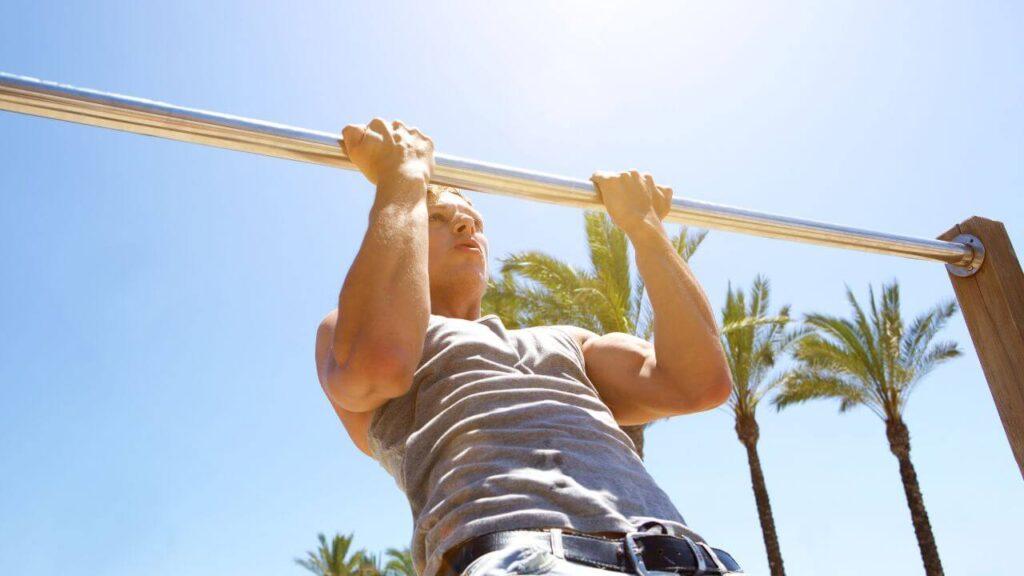
Mixed Grip Pull-up
The mixed grip pull-up entails holding the bar with a pronated pull-up grip in one hand and a supinated chin-up grip in the other, as the name suggests. Naturally, this implies that you will work your biceps and lats concurrently, giving each side of your body a somewhat different stimulus.
The mixed grip is a terrific alternative because it’s easier on the grip if you’re seeking to log more volume by putting more time under strain during a pull-up session, especially if grip strength is a weakness.
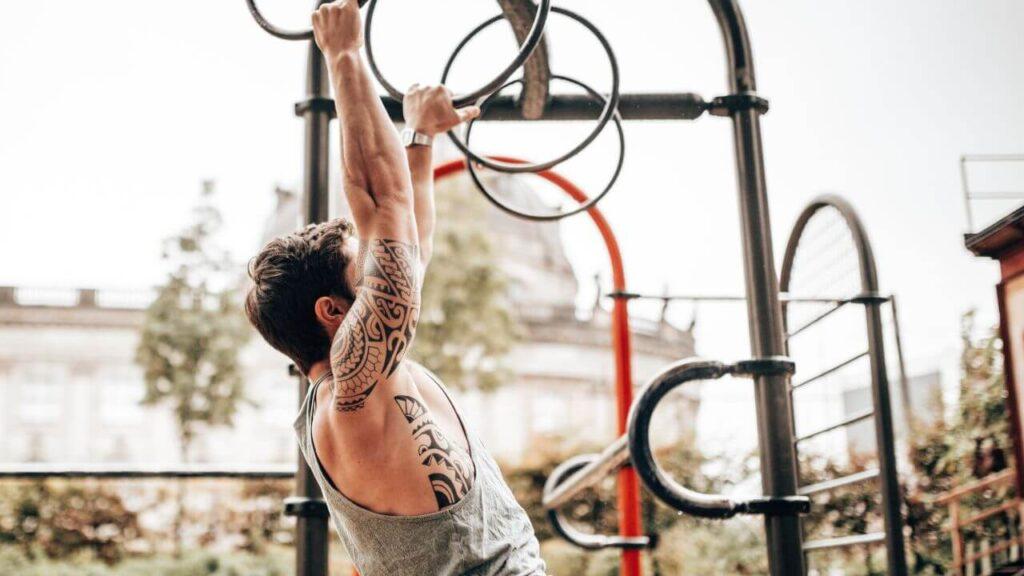
Negative Pull‑up
Negative pull-ups are referred to as “closed chain” workouts by athletic trainers and physical therapists since your hands remain attached to the bar the entire time. Using assistance, you elevate yourself to the halfway point of a pull-up such that your chin is over the bar.
You then carefully lower yourself into a dead hang while fighting gravity, maintaining control over your back and arm muscles as you let go of the bar.

Wide-Grip Pull-up
Use a wider grip to engage the lats even more during a pull-up than a narrower grasp. Wide-grip pull-ups are fantastic for people who have trouble activating their lats since they virtually force the lats to fire.
Many people tend to stick their chins out during these because they will feel more difficult. Instead, keep your chin in throughout the exercise to keep your chest down, maintain a hollow body stance, and prevent spinal extension.
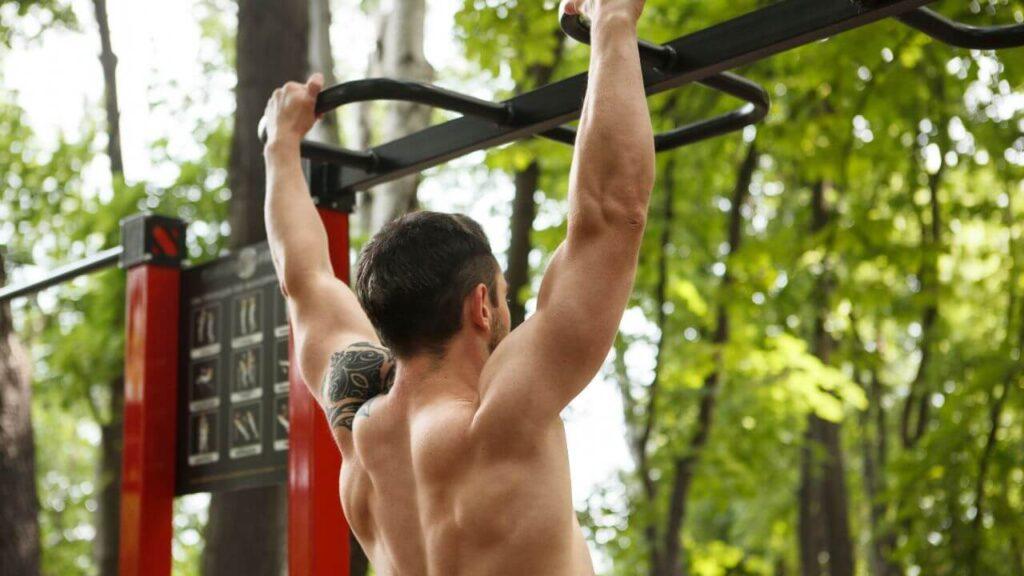
Muscle-up
You perform a muscle up starting in the overhand pull-up posture with the arms stretched over the head. The arms lift the torso in a radial pull-up, which is faster than a standard pull-up.
Your triceps, lats, deltoids, and pectorals are worked out during muscle-ups.

Towel/Rope Pull-up
To perform a towel grip pull-up, you simply throw a towel over a pull-up bar and grasp onto its two ends as you pull yourself up.
Towel pull-ups target your forearms, grip, and hand strength, which, like the grenade grip, can convert into grip strength for other actions like rope climbs while still demanding your other pulling muscles.
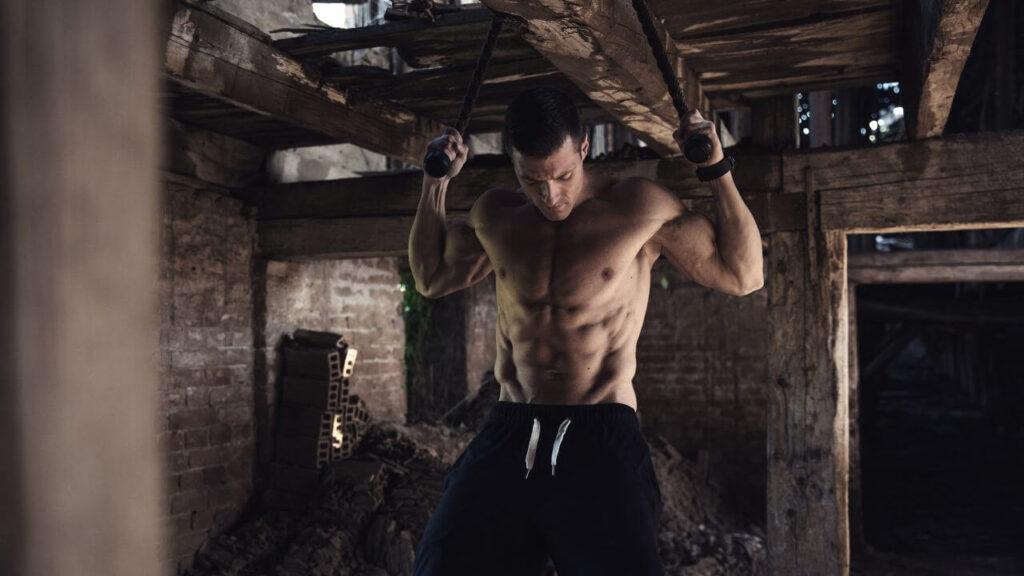
L-Sit Pull-up
The l-sit pull-up is a bodyweight exercise that requires the lifter to properly place themselves in the l-sit position before doing a strict pull-up while still in the l-sit posture.
This exercise calls for core strength, flexibility, upper body strength, and shoulder/scapular mobility to correctly lift oneself to the bar.
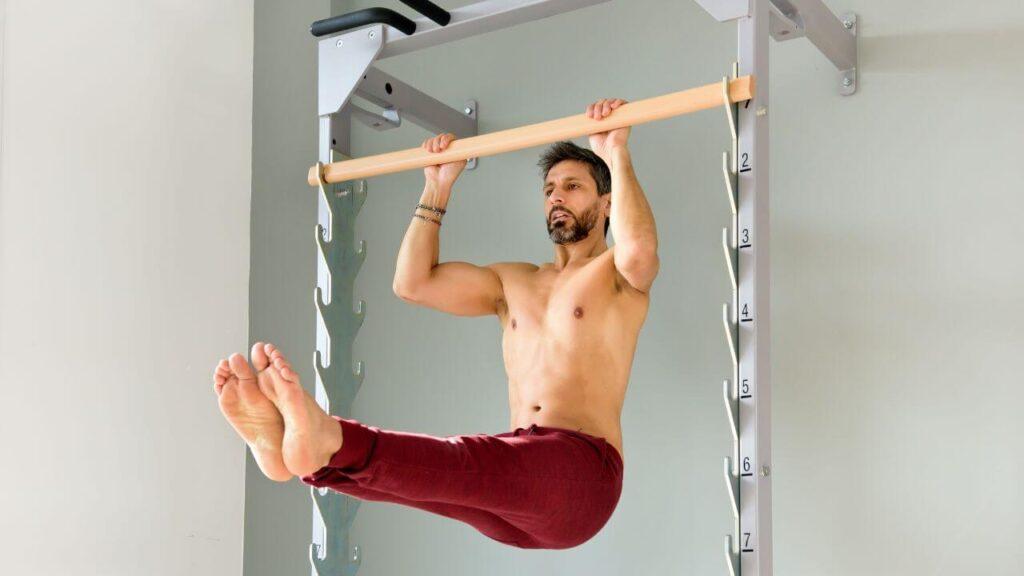
What Type of Pull-Ups Are Best?
The best type of pull-ups are those with a natural grip. Many individuals assume that performing a pull-up with a neutral grip, palms facing each other on two handles that are parallel to each other, is the best.
Essentially enables you to use all of the upper body muscles needed to perform a pull-up, including your lats, biceps, deltoids, pecs, and shoulders.
Which Pull-up Is Easiest?
Chin-up is the easiest pull-up. This exercise, which allows you to use your biceps more, is undoubtedly the first pull-up you should work on perfecting.
It is performed with your palms facing you and an underhand (supinated) grip. If you are having trouble with full pull-ups, spend some time working on the chin-up to develop strength before moving on to more complex varieties.
Which Pull-up Is the Hardest?
The hardest pull-up is an overhand grip pull-up. It is the most difficult because your lats require more work.
A rep becomes harder as your grip becomes broader because your lats receive less support from other muscles. Pull-ups more effectively work the lower trapezius muscles in your back, which are located between your shoulder blades, than chin-ups.
What Pull-up Is Best for Back?
The best pull-up for the back is a pronated (overhand) grip pull-up. A pronated grip is so successful because it puts the biceps in an awkward posture, making them less beneficial for the workout.
The back muscles will be under the most strain while you perform the motion. But you need to consider more than just how your hands are positioned.
What Is the Safest Pull-up Grip?
The safest pull-up grip is slightly wider than the shoulder width. The lats will be best engaged in this position.
While going too narrow may limit your range of motion, going too wide will put too much pressure on your shoulders. This is an excellent option because most people consider it to be natural.
How to Get Better at Pull Ups?
To get better at pull-ups, you should train you back at least twice a week. To improve your back endurance, perform strength training exercises for three to four sets of ten to fifteen repetitions.
Here are some excellent back exercises:
- Machine lat pulldown
- Single-arm lat pulldown
- Machine seated row
- Dumbbell row
- Barbell row
- Dumbbell bent over lateral raise
- Back extension
- Reverse machine fly
Do these exercises if your goal is to increase the total number of pull-ups you can do. To do more pull-ups, you need to commit.
Common Pull-up Mistakes to Avoid
These are the four most frequent mistakes people make when completing pull-ups:
- Your range of motion is not fully extended – Partial reps prevent the lats from fully lengthening between reps, which promotes the arms to take over and carry out most of the work.
- Your elbows are flaring up – Keeping your elbows under the bar will help your lats get stronger and more developed.
- Your shoulders are not being set – Each rep should start with a noticeable shoulder retraction and depression.
- You’re keeping your alignment like an arrow – When performing pull-ups, visualize lifting your rib cage toward the bar. Set the shoulders and arch the back. You’ll detect the distinction.
Eliminating these frequent errors will greatly enhance your technique.
FAQs
Do Pull-Ups Increase Testosterone?
Yes, pull-ups increase testosterone. You should do pull-ups at least 3 times a week to see the best results.
Are Pull-Ups Harder for Bigger Guys?
Yes, pull-ups are harder for bigger guys. Two main things that make doing push-ups harder are the weight and the range of motion in bigger people.
Is It Ok to Do Pull-Ups Everyday?
It is okay to do pull-ups every day. If you can do 15 pull-ups or more in a single set without reaching physical failure, performing a few sets of 10–12 pull-ups without reaching muscle exhaustion is safe to do every day.
Why Are Pull-Ups So Important?
Pull-ups are important because they increase your grip, upper body size, and strength while concurrently strengthening several muscle groups.
Your body will benefit significantly from pull-ups. Your forearms, wrists, and hands are strengthened, and your athletic ability is improved.
Pull-ups can be the best exercise for you if you’re looking for anything that will give you various advantages.
Which pull-up variation do you prefer the most?
Start Building Your Dream Body Today
Ready to elevate your fitness game without falling into the trap of dull, repetitive routines that just don’t deliver? Imagine sculpting your ideal physique and boosting your health, all while still enjoying life’s pleasures, like those irresistible weekend getaways and your aunt’s legendary cheesecake. With our online fitness and nutrition coaching service, you don’t have to compromise. Dive into a personalized fitness journey that blends perfectly with your lifestyle, not against it. Book your completely free discovery consultation today, and take the first step towards a transformation that doesn’t require giving up the joys of life.

“I was skeptical about online fitness coaching, but Functional Body Savage completely changed my perspective. Vanja and Radomir’s personalized approach and attention to detail have helped me achieve goals I never thought possible. I’m stronger, more confident, and grateful for their guidance.”
Emily Thompson, San Francisco, CA
Learn More About Our Online Coaching ServiceReferences:
- https://www.ncbi.nlm.nih.gov/pmc/articles/PMC5548150/
- https://www.ncbi.nlm.nih.gov/pmc/articles/PMC4499985/
- https://www.ncbi.nlm.nih.gov/pmc/articles/PMC6530317/
- https://pubmed.ncbi.nlm.nih.gov/26420238/

